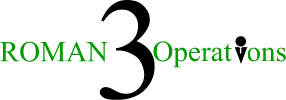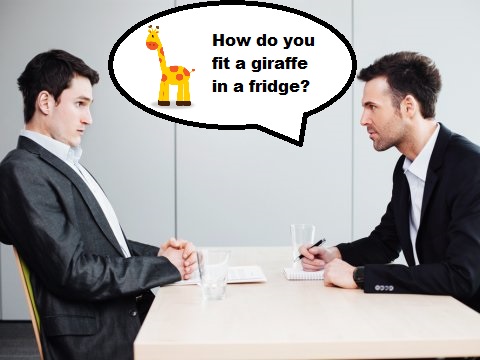Productivity Insulation: How your business could save $27,000
Overlooking your biggest investment
One of the most overlooked parts of owning or managing a business is the need to safeguard your labour. In the vast majority of businesses, labour is the biggest portion of an organization’s operating expenses. Depending on the size and type of your business, it can be between 50-75% of your total overhead. Yet, most businesses and organizations do not put much focus on protecting and maintaining the productivity of their staff. If you look at it from a completely financial perspective, it is mind boggling! If a business has a piece of equipment that is a major expense, let’s say, 15% of your entire operating costs, it would be taken care of extremely well. Business owners and managers know that protecting and maintaining your important assets is how you ensure the best productivity and profitability from your business.
The Problem
This begs the question, why is it that people are quick to protect and maintain their equipment, but will not put the same focus on protecting and maintaining their labour?
Maybe, it is because equipment is seen as an investment, and labour is seen as an expense? Or maybe it is because equipment is a tangible, noticeable asset. Where labour is your staff, a bunch of people doing different things and different times. It’s less noticeable and more subtle.
Regardless, the why is puzzling, but not the most important thing to understand. What is important to understand is that, as with your equipment, if you do not invest time and effort into your staff, you are losing A LOT of money. This could damage the financial future of your business.
Labour Value Loss
The impact of not investing time and effort into your staff is called Labour Value Loss. It is the very scary consequence of neglecting to protect and maintain the productivity of your staff. It is the financial toll that common labour problems have on a business.
For example: According to the Center for American Progress it costs the equivalent of 20% of a person’s salary to replace them. The costs associated with replacing staff include, but are not limited to:
- Paying overtime
- Recruitment costs
- Drop in productivity
- Any associated customer loss
Labour Value Loss is a startling reality for most businesses. What makes it so concerning is that the money lost is slow and subtle, like a leaky faucet or a poorly insulated roof. This is happening everywhere, every day.
So, the real question is how do we fix it? Well, just like a drafty home, we fix it with insulation.
The Solution
To address Labour Value Loss, you need Productivity Insulation. This is the way you protect and maintain the productivity of your staff. The easiest way to think of Productivity Insulation is to look at it as robust HR policies and Employee Engagement. HR policies are important to make sure rules and procedures are clear and transparent, keeping businesses compliant and employees informed. However, the lion’s share of effective Productivity Insulation comes from Employee Engagement.
Employee Engagement is the efforts that organizations make to create a high level of motivation and enthusiasm in employees. For Employee Engagement to be effective, it doesn’t need to be complicated or costly, it just needs to be understood and consistent.
The return on your investment from Employee Engagement can be astonishing. The Labour Value Loss from Disengagement, when employees have a low level of motivation and enthusiasm, is 34% of their annual salary. This number alone makes Labour Value Loss expensive. Add other elements, like Turnover or Absenteeism, and you have a costly problem that you cannot ignore. The future of your business depends on it.
If you would like to learn more about Labour Value Loss, here is a short video. This video is part of a FREE, on-demand, 30-minute course we provide to businesses called: Rethinking Labour Costs: Increasing Profits and Productivity. Click here to check it out.
Oh, I almost forgot!
You are probably wondering where the $27,000 in the title of this article comes from. Well, that is the average Labour Value Loss that a business will experience from Disengagement each year. If you would like to know how it was calculated:
Here is where we got the numbers for our formula:
- The Average Business, with staff, has 4 employees who make an average of $41,000
- The percentage of employees who are disengaged is between 67%-75% But we will be conservative and just say 50%
- As stated earlier, a disengaged employee cost 34% of their annual salary.
Here is our formula:
| (# of Staff) x (Annual Salary) | x (Percentage of Employees Disengaged) | x (Cost of Disengagement) | = Total Labour Value Loss due to Disengagement |
| 4 Employees x $41,000 = $164,000 | 50% of employees are disengaged x 0.50 | disengaged employees cost 34% x 0.34 | = $27,880 |
This is a conservative, yet well supported, number. However, it is only one aspect of Labour Value Loss.
To learn more about Labour Value Loss, and to calculate how much your business may be losing due to Disengagement, Turnover, Absenteeism, etc., take our FREE course.
Rethinking Labour Costs: Increasing Profits and Productivity.
Roman 3 is an advising and solutions firm that specializes in inspiring progressive action, creating a culture of innovation, and assisting organizations in implementing transformative change. We help you build capacity, collaborate, be progressive, and grow to your full potential. For more information on our services and support reach out to us at info@roman3.ca







